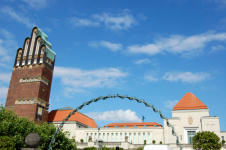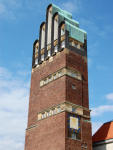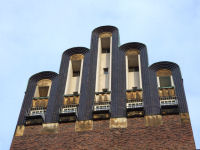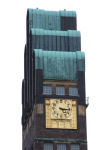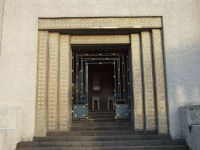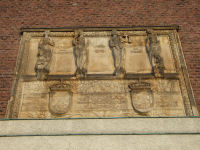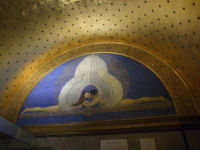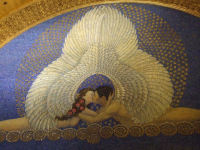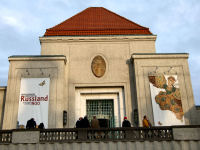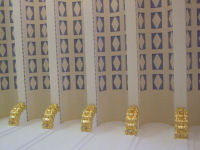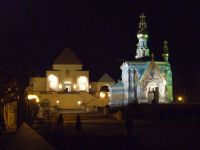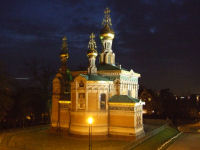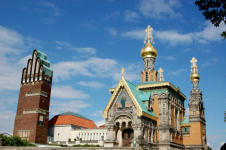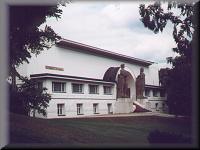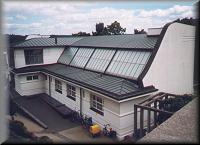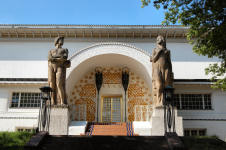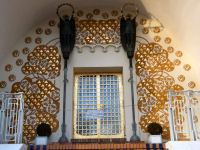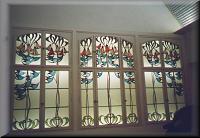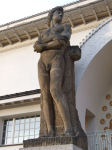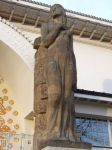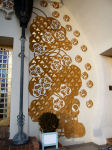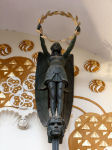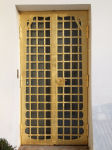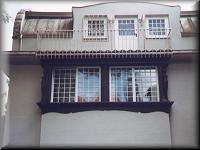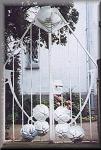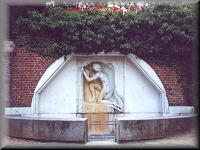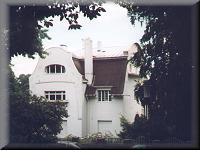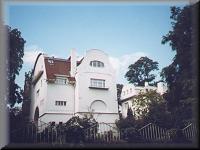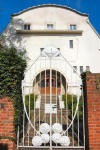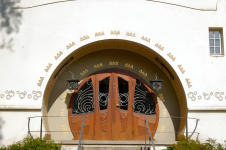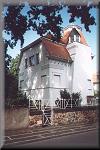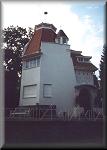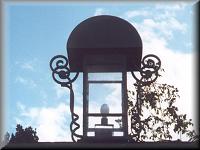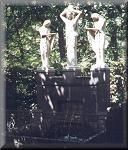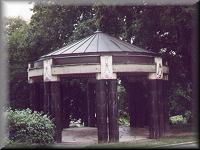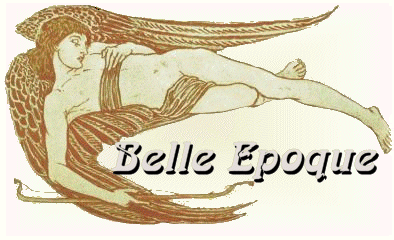The Belle Epoque in Europe
Germany
Hessen: Darmstadt
Artists' Colony Mathildenhöhe
The German architecture, at the end of the XIXth century, was dominated by a style developed during the industrialisation and the foundation of the second empire in 1871. This style, called "style of the foundation" (in German Gründerzeitstil), nowadays seems to be pleasant, nice, even light compared to the lack of ornamentation of the cheap post-war architecture and the cruelties of modern concrete architecture; whereas, around 1900, it was considered heavy, overladen and old-fashioned. It was time to find a new style.
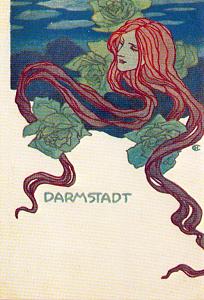
In the course of the XIXth century, the decorative arts had become an important economic branch. The Grand Duke of Hesse Ernst Ludwig,
after having visited England several times, knew the movement Arts and Crafts; he even employed two artists of the Arts and Crafts
movement to decorate rooms in his New Palace in Darmstadt. This way inspired, his intention was to promote the regional industry and at the
same time to become famous as an art sponsor by making of Darmstadt an important cultural centre. Therefore, he invited seven artists into
his residence, and in autumn 1899, the Künstlerkolonie (Artists' Colony) on the Mathildenhöhe (Mathilda Hill) was
founded, a park situated above the city of Darmstadt, where they worked at architecture, decorative art, sculpture and painting.
Zu den Förderern der Kunstgewerbereform gehörte auch der Darmstädter Verleger Alexander Koch, dessen Kunstzeitschriften
Innendekoration und Deutsche Kunst und Dekoration zu Sprachrohren des neuen Stils wurden.
Another sponsor for the reform of decorative arts in Darmstadt was the editor Alexander Koch; he published two art magazines,
Innendekoration (Interior Decoration) and Deutsche Kunst und Dekoration (German Art and Decoration), which became
important mouthpieces of the new style.
The first exposition of the Artists' Colony took place in 1901 at the Mathildenhöhe. The members of the colony had not only built
nine houses in the style Art Nouveau but they were also interiorly decorated and fully furnished in the same style intended to serve as
an example how to build and live in a modern way. This exposition was a great international success even if here and there some too
strange forms were criticised. So Darmstadt had become, together with Nancy, Paris, Vienna and Glasgow, a centre of the European Art
Nouveau, and three further expositions in 1904, 1908 and 1914 causing sensations took place.
Joseph Maria Olbrich (1867-1908)
Wedding Tower (1908)
Joseph Maria Olbrich (1867-1908)
Exposition Hall (1907/08)
Leontij Nikolajewitsch Benois
Russian Chapel (1897-99)
Joseph Maria Olbrich (1867-1908)
Ernst-Ludwig-Haus (1900/01)
(Museum of the Artists' Colony)
Still there were soon differences in the artistic points of view and jealousy between the artists so that in 1902 already,
some artists of the original crew, Joseph Maria Olbrich, Patriz Huber,
Ludwig Habich, Rudolf Bosselt, Hans Christiansen, Paul Bürck and Peter
Behrens, left Darmstadt.
Nevertheless, Darmstadt kept its importance until the First World War; in spite of efforts made to revive the Artists' Colony after
the war, they had nearly no success, and the last artist left the Mathildenhöhe in 1921.
Although during the Second World War, many buildings suffered irreparable damages, there is still so much to see that Darmstadt is
always worth a visit, not to forget the singular charm of the entire Mathildenhöhe!
Joseph Maria Olbrich (1867-1908)
Small Glückerthaus (1900/01), Alexandraweg 25
Interiors: Patriz Huber (1878-1902)
Joseph Maria Olbrich (1867-1908)
Large Glückerthaus (1900/01), Alexandraweg 23
Interiors: Patriz Huber (1878-1902)
